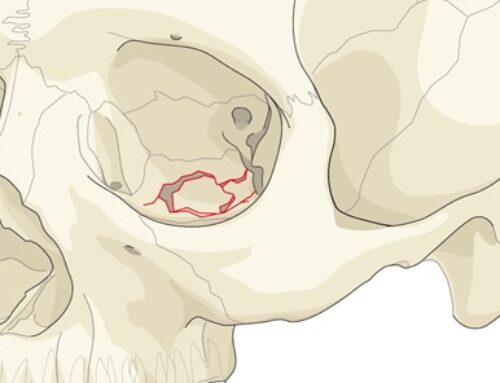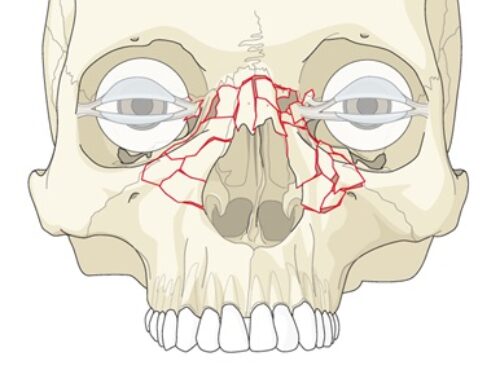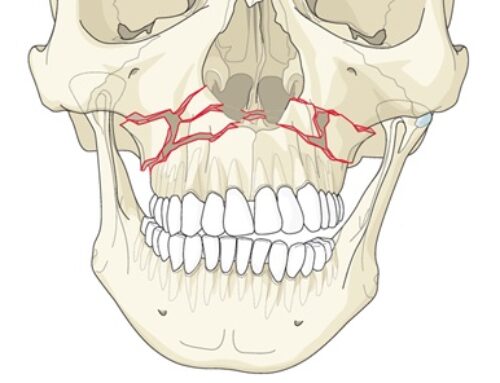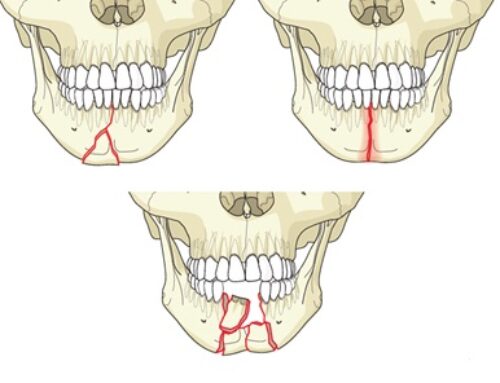Anatomy of the Nose
- Inferior edge of nasal bone is continuous with the upper lateral cartilage
- Lateral border of upper lateral cartilage joins the piriform aperture of the maxilla
- The inferior edge of the upper lateral cartilages slides under the lateral crus of the alar cartilage (connected by dense tissue comprised of superficial and deep perichondrial layers that include several fragments – sesamoids)
- Attachment often folded back by 2 to 3 mm and frequently called scroll area
- The alar (lower lateral) cartilages composed of medial and lateral crura
- The alar cartilages are attached by interdomal ligamentous attachments, contributing to tip support
- The two upper lateral cartilages fuse with the nasal septum to form the Internal nasal valve area. The lower lateral cartilages and septum provide support for the nasal tip. The upper and lower lateral cartilages do not directly fuse with each other. The close relationship through a fibrous attachment contributes to tip support and an intercartilagenous incision will interrupt this attachment. The medial crura are taken together to form one leg of the tripod and the lateral crurae form one leg each of the tripod. Changes in tip rotation and position may be visualized in terms of modification of this tripod during rhinoplasty. The nasal septum and medial crura are closely associated to form a primary tip support mechanism. Full transfixion incisions interrupt this attachment and may cause tip drooping.
- The marginal rim incision is made along the caudal margin of the lower lateral cartilage. The transcollumellar incision is a skin incision across the mid-columella. Bilateral marginal and the transcollumellar incisions help complete external skeletonization of the nasal skeleton. The intercartilagenous incision is used in endonasal rhinoplasty techniques. The blade passes deep to the lateral crura and superficial to the upper lateral cartilage. The transfixion incision is generally used in endonasal rhinoplasty procedures for exposure of caudal septum. A complete transfixion incision transects the attachment of both medical crura to the septum, and thus some loss of tip support results. The hemitransfixion incision is also used in endonasal rhinoplasty procedures for exposure of caudal septum. As it is only made on one side and usually stops short of the anterior nasal spine, it preserves some tip support as compared to a complete transfixion incision.
- The nasolabial angle is the defining element of nasal tip elevation as the nose relates to the upper lip. The average Caucasian female nasolabial angle is 95-110.
- The nasal tip or intradomal region is located at the junction of the medial and lateral crura. Intradomal sutures can control and position the nasal tip. The nasal cinch suture or alar reduction can narrow the alar base width. Lateral osteotomies are used to close an open-roof deformity. Suturing can be used to maintain upper lateral cartilage position in some cases.
- The medial part of the upper lateral cartilage joins the quadrangular cartilage. The angle formed by the attachment should be around 10-15 degrees.
- Narrowing of the nasal tip can be achieved by removal of a cephalic 2-5 mm strip from the lower lateral cartilages and/or with interdomal suturing. The procedures often result in upward rotation of the tip. A shield graft can be placed from any removed septum to further define the tip.
Nasal Tip Support
Primary
- Attachment of the caudal septum and medial crura (interrupted by a complete transfixion incision)
- Fibrous attachments between upper and lower lateral nasal cartilages (aka scroll area) (interrupted by intercartilaginous incisions)
- Size, shape, and strength of the lower lateral cartilages
Secondary
- Interdomal ligament
- Sesamoid complex which in effect attaches the lower lateral cartilages to the piriform rim
- Cartilaginous septal dorsum
- Anterior nasal spine
- Membranous septum
- Alar cartilages with their overlying skin
Septal Cartilage
Composed of six structures
- septal crest of the maxilla
- perpendicular plate of the palatine bone
- perpendicular plate of the ethmoid bone
- vomer
- cartilaginous septum (quadrangular cartilage)
- membranous septum
- N, nasal bone
- ULC, cut edge of the upper lateral cartilage
- E, ethmoid
- SC, septal cartilage
- SA, septal angle
- V, vomer
- SCM, septal crest of the maxilla
- LC, LLC, cut edge of the lateral crus, lower lateral cartilage
- MS, membranous septum
- MC, LLC, medial crus, lower lateral cartilage
- ANS, anterior nasal spine
Nasal Tip Rotation
- Cephalic trimming of the lower lateral cartilages provides for some upward tip rotation as the cephalic edge and its connection to the upper lateral cartilages is removed. Cephalic trimming also narrows nasal tip
Nasal Valve
- Formed from septum, upper lateral cartilage, nasal floor
- Spreader grafts are placed to increase the size of the junction between upper lateral cartilage and nasal septum











